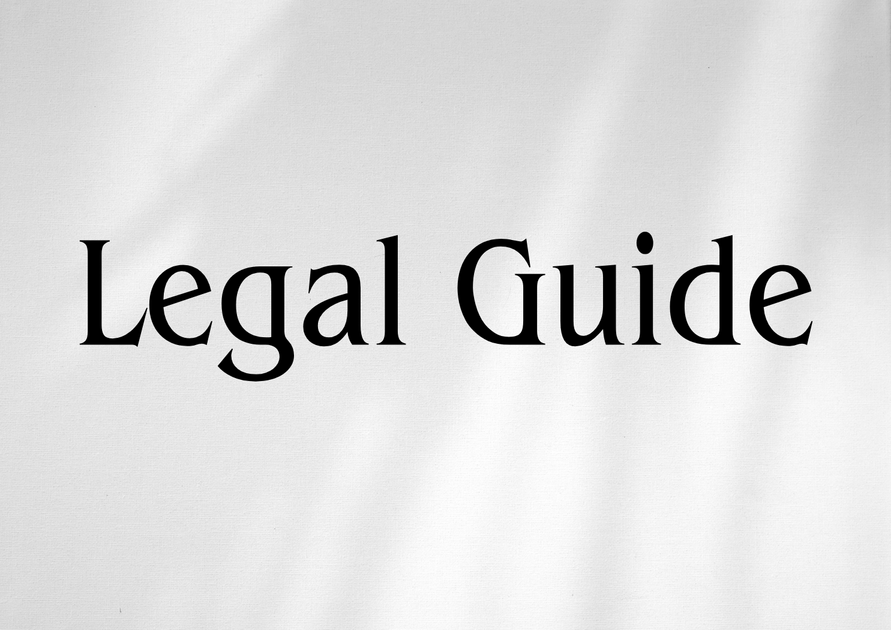Introduction
The aviation sector is a cornerstone of the United Arab Emirates (UAE) economy, with air cargo playing a pivotal role in facilitating global trade and driving commercial growth. As the UAE seeks to solidify its status as a logistics and aviation hub, understanding the legal landscape surrounding carrier liability for cargo damage is more crucial than ever. Recent innovations, economic diversification, and the UAE’s ambition to align with international best practices have led to regulatory updates in air law. These changes affect not only airlines but also shippers, consignees, freight forwarders, and insurance providers involved in cargo movements. The aim of this article is to provide a consultancy-level examination of carrier liability for cargo damage under UAE air law, blending rigorous legal analysis with practical guidance for organizations that operate in this vital sector.
Our analysis draws directly on primary UAE legal sources—such as Federal Decree Laws, Cabinet Resolutions, and Ministry of Justice Circulars—and integrates insights from the latest 2025 amendments. Whether you are a business executive, in-house counsel, or compliance manager, this article equips you to navigate liability risks, ensure regulatory compliance, and optimize your logistics operations in the UAE’s evolving legal environment.
Table of Contents
- Overview of UAE Air Law Governing Cargo Liability
- Liability Framework and Key Principles Under Federal Law
- Scope of Air Carrier Liability for Cargo Damage
- Comparison of UAE Law and International Standards
- Recent UAE Law 2025 Updates and Legal Reforms
- Practical Insights and Case Studies
- Risks of Non-Compliance and Penalties
- Compliance Strategies for Organizations
- Conclusion and Best Practices
Overview of UAE Air Law Governing Cargo Liability
Legal Foundation: Air Navigation Law and Key Decrees
Carrier liability for cargo damage in the UAE is principally set out in Federal Law No. 20 of 1991 concerning Civil Aviation, as subsequently amended (the UAE Civil Aviation Law), alongside Federal Decree-Law No. 8 of 2022 and Executive Regulations and Cabinet Resolutions promulgated under the auspices of the General Civil Aviation Authority (GCAA). This legal framework is designed to regulate carriage of goods by air, define the circumstances of carrier liability, and protect the interests of shippers and consignees.
Provisions are also integrated with international conventions to which the UAE is a party, most notably the Convention for the Unification of Certain Rules Relating to International Carriage by Air (the Montreal Convention 1999), implemented through Cabinet Resolution No. 402 of 2019. This dual domestic–international approach ensures both compliance with global norms and adaptation to the UAE’s unique commercial environment.
Key Authorities and Regulatory Bodies
- General Civil Aviation Authority (GCAA): Responsible for civil aviation safety, regulation, and ensuring compliance with applicable cargo liability rules.
- Ministry of Justice: Issues guidelines and oversees judicial interpretation of aviation liability disputes.
- UAE Courts: Serve as the competent jurisdiction for claims regarding cargo loss or damage occurring under UAE air law.
Official Sources Consulted
- Federal Law No. 20 of 1991 (Civil Aviation Law), as amended
- Federal Decree-Law No. 8 of 2022
- Cabinet Resolution No. 402 of 2019 (Implementation of Montreal Convention 1999)
- Ministry of Justice Circular 122/2023: Judicial Guidance on Aviation Claims
Liability Framework and Key Principles Under Federal Law
When Does Carrier Liability Arise?
A carrier’s liability for cargo is triggered when:
- Goods are lost, damaged, or destroyed during air carriage;
- The period of liability begins from receipt of cargo at the origin airport until delivery at destination;
- The damage stems directly from carriage by air, excluding pre- and post-carriage risks unless specifically covered under the air waybill or contract.
Core Obligations of Air Carriers
The primary duties placed on carriers under UAE law are:
- Safe and timely delivery of cargo to the named consignee;
- Proper documentation (issue of air waybill per Article 34, UAE Civil Aviation Law);
- Liability for damage, loss, or delay caused during carriage, unless exceptions apply (force majeure, inherent defect in goods, act or omission of consignor/consignee).
Limits of Liability and Claims Process
The UAE adopts limitation of liability principles largely in alignment with the Montreal Convention 1999, capping compensation subject to specified thresholds unless willful misconduct or gross negligence is proven by the claimant. Claims must generally be notified in writing to the carrier within 14 days of delivery for damage, or within 120 days for loss (subject to statute of limitations specified under Article 41, Civil Aviation Law).
Carrier Liability Exclusions
- Force Majeure: Carriers are not liable for unforeseeable circumstances beyond their control, provided due care was taken.
- Packaging Defects: Where damage arises from the consignor’s faulty packaging, carrier liability may be excluded.
- Acts/Omissions of Shipper or Consignee: Damage resulting from shipper error, instructions, or inherent nature of the goods represents exceptions to liability.
Scope of Air Carrier Liability for Cargo Damage
What Constitutes Cargo Damage?
Under Federal Decree-Law No. 8 of 2022 and Article 36 of the Civil Aviation Law, cargo damage encompasses physical loss, deterioration, partial or total destruction, and even contamination or spoilage during air carriage. Liability also extends to delay-induced damage where the shipment’s commercial value is diminished by untimely delivery.
Period of Liability
Per the legal framework, “carriage by air” is defined as the period during which the cargo is in the custody of the carrier, from acceptance at origin airport until handover at the agreed destination. Liability does not typically extend to carriage by land or sea before or after the air journey, except where these services are performed by the same carrier under a single contract.
Extent of Recoverable Damages
The law allows for compensation capped according to Special Drawing Rights (SDRs) per kilogram of affected cargo, following Montreal Convention benchmarks (currently ~19 SDR per kg, with periodic adjustment). Carriers and customers may, through special agreement and upon paying supplementary charges, increase liability limits.
Comparison of UAE Law and International Standards
The UAE’s harmonization with the Montreal Convention 1999 under Cabinet Resolution No. 402 of 2019 marked an essential shift toward the modern global standard for air carrier liability. The below table demonstrates key comparative points with respect to carrier liability for cargo damage:
| Aspect | UAE Pre-Montreal (Warsaw Regime) | Post-Montreal (Current UAE Law) |
|---|---|---|
| Liability Limit per KG | Approx. 17 SDR (~USD 25) | 19 SDR (~USD 28) as set by Montreal |
| Requirement for Written Notice | 7 days for damage; 14 for loss | 14 days for damage; 120 for loss |
| Time Limitation for Claims | 2 years from the date of arrival | 2 years (unchanged) |
| Scope of Strict Liability | Limited, with multiple exclusions | Expanded, subject to willful misconduct exception |
Visual suggestion: Compliance checklist infographic summarizing claim process under the UAE/Montreal regime.
Key Takeaway
The adoption of Montreal Convention parameters has increased transparency, raised the cap on recoverable damages, and expanded the responsibility of airlines over their cargo handling processes. This change benefits shippers by providing greater protection, while requiring carriers to upgrade risk management and operational protocols.
Recent UAE Law 2025 Updates and Legal Reforms
Highlights of the 2025 Legal Update
Federal Decree-Law No. 8 of 2022 introduced several amendments that came into force in January 2025, with the intention of further aligning domestic air law with international conventions and advancing the UAE’s competitiveness as a logistics hub. Key elements include:
- Revision of Claim Deadlines: New protocols for notification and documentation to protect cargo interests and streamline dispute resolution.
- Digitalization and E-AWB Mandate: All air waybills and carrier documentation must now be electronic by default, improving traceability and rapid claims initiation.
- Enhanced Burden of Proof Requirements: Shippers and consignees must submit evidence of value and loss as a prerequisite to successful claims, placing a premium on documentary accuracy.
- Greater Clarity on Jurisdiction: Confirmed jurisdiction of UAE courts for damage or loss occurring within, or during transit to/from, UAE airports; concurrent jurisdiction for certain international disputes.
Action Points for UAE Businesses
- Review and update cargo insurance arrangements to reflect increased liability limits;
- Transition to fully electronic documentation and ensure system security;
- Train employees on new evidentiary rules and claims form requirements;
- Engage with carriers on negotiated liability limits and contract terms, especially for high-value shipments;
Visual suggestion: Flowchart diagram mapping the 2025 cargo claims process from notification to settlement in the UAE.
Practical Insights and Case Studies
Hypothetical Case Study: Damaged Electronics Shipment
Facts: A UAE-based electronics importer contracts with an airline to airlift high-value tablets from Asia to Dubai. Upon arrival, a portion of the shipment exhibits water damage and some boxes are missing. The consignee notifies the carrier immediately and files a claim within 7 days.
Legal Analysis: Under Article 36, the airline is prima facie liable unless it can demonstrate the loss resulted from inherent defects in the goods, defective packaging by the shipper, or force majeure. Since proper packaging was confirmed and no weather or customs incidents were reported, the carrier’s liability is invoked, subject to the SDR/kg compensation cap. The claim is admissible as the deadline is met, and the court will likely award damages based on the declared cargo weight and SDR rates.
Hypothetical Case Study: Temperature-Sensitive Pharmaceutical Cargo
Facts: A pharmaceutical distributor flies temperature-controlled vaccines via a UAE carrier. On arrival, monitoring data reveals the cargo exceeded safe temperature thresholds, rendering it unusable. The cargo had been stored during a stopover in an intermediate country, managed by a subcontractor.
Legal Analysis: The carrier is responsible for the entire period of “carriage by air”—including ground handling—unless it proves the loss was due to an excluded factor. As the waybill specified temperature control as a carriage condition, failure to maintain this triggers strict liability on the main carrier, even if a subcontractor handled part of the journey. Compensation is again subject to the Montreal/SDR limitation unless the distributor opted for a higher liability limit (which should be checked in contract documentation).
Common Pitfalls for Businesses
- Lack of timely damage notification, resulting in denied claims;
- Incomplete or inaccurate air waybill details, undermining legal protection;
- Failure to declare special cargo conditions (e.g., temperature sensitivity, fragility);
- Overreliance on standard liability limits without assessing shipment value vis-à-vis prevailing SDR rates.
Risks of Non-Compliance and Penalties
Penalties Under UAE Law
Failure by airlines or freight forwarders to comply with cargo liability rules can result in:
- Administrative Sanctions: Fines up to AED 500,000 per breach (per GCAA enforcement guidelines 2024/2025);
- Suspension or Revocation of Operating License: For persistent or gross misconduct;
- Litigation Exposure: Liability for full value of unprotected or undeclared cargo, potentially exceeding normal SDR limits;
- Damages for Bad Faith: Courts may award aggravated damages or legal costs in cases of deliberate concealment or obstruction.
| Non-Compliance Type | Legal Reference | Penalties |
|---|---|---|
| Failure to issue or complete air waybill | Art. 34, Civil Aviation Law | Fines, civil liability, potential suspension |
| Delay in claim response | Ministry of Justice Circular 122/2023 | Legal costs, interest on claims, regulatory fines |
| Non-adoption of e-AWB/electronic systems (from 2025) | Federal Decree-Law No. 8 of 2022 | Sanctions under GCAA rules |
Compliance Strategies for Organizations
Checklist for Carrier and Shipper Compliance (2025 and Beyond)
- Implement robust e-AWB (electronic air waybill) protocols for all cargo shipments;
- Document cargo contents, value, and special handling requirements with precision, referencing current GCAA guidelines;
- Regularly train staff on updated claim submission deadlines and evidentiary standards;
- Review contracts to clarify liability limits and ensure they align with the most recent regulatory amendments;
- Engage legal or compliance advisors to pre-empt disputes and manage regulatory audits;
Visual suggestion: Interactive online tool or downloadable PDF summarizing compliance workflow and deadlines for UAE-based carriers and shippers.
Contractual Recommendations
- For high-value or sensitive shipments, negotiate extended liability limits with carriers and ensure insurance is commensurate with risk exposure;
- Map supply chain interfaces to verify the carrier’s period of responsibility under unified contracts;
- Insert mandatory notification clauses and require digital timestamps to memorialize key events in the carriage lifecycle.
Conclusion and Best Practices
Carrier liability for cargo damage under UAE air law is characterized by a blend of international rigor—via the Montreal Convention regime—and progressive domestic reforms aimed at promoting the UAE’s position as a world-class logistics hub. The 2025 legal updates, particularly the e-AWB mandate and clarified compensation protocols, both empower cargo stakeholders and increase the responsibility resting with carriers and shippers.
To succeed in this dynamic legal environment, UAE organizations must treat cargo liability management as a strategic imperative. Proactive legal risk assessment, digital transformation of documentation, staff training, and periodic contract reviews are essential. Businesses that fail to adapt may face significant fines, reputational loss, and loss of market access, while those that anticipate and embed these regulatory expectations will benefit from operational efficiency, legal certainty, and enhanced trust with international partners.
Forward-looking Perspective: Over the next several years, we anticipate further convergence between UAE air law and evolving global standards, with greater focus on sustainability, data integrity, and supply chain accountability. Early compliance will be a market differentiator—organizations should act now to review their practices and secure compliant, efficient cargo operations in the UAE.




